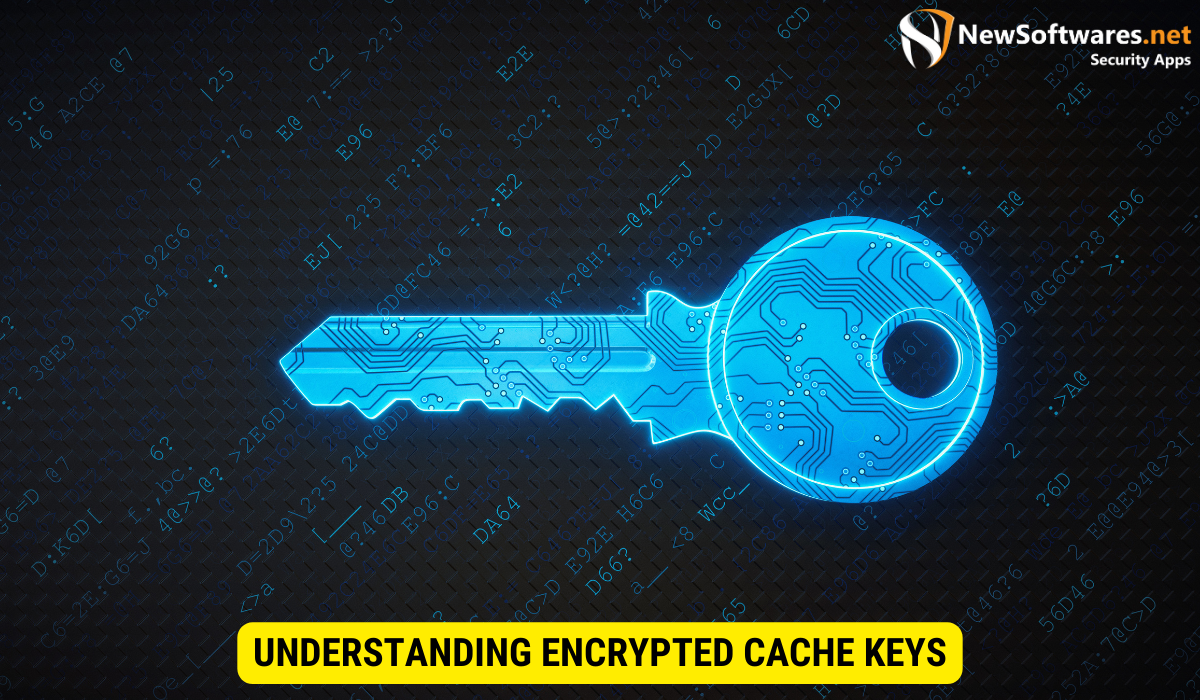In today’s digital landscape, data security is of utmost importance. One key aspect of data security is the use of encrypted cache keys to protect sensitive information. Encrypted cache keys serve as a layer of protection, ensuring that data stored in caches remains secure even in the event of a breach.
Together, we will explore the process of collecting data for encrypted cache keys, including its definition, importance, steps, tools, troubleshooting common issues, and optimization techniques.
Understanding Encrypted Cache Keys

When it comes to data storage and security, encrypted cache keys play a vital role. These unique identifiers serve as a reference to data stored in a cache, ensuring its integrity and protection. But what exactly are encrypted cache keys, and why are they so important?
Definition and Importance of Encrypted Cache Keys
Encrypted cache keys are generated using encryption algorithms and serve as a secure means of accessing and retrieving cached data. They act as a protective layer, making it more challenging for unauthorized users to access and exploit sensitive information. By encrypting the cache keys, the data becomes virtually inaccessible without the proper decryption keys.
Imagine a scenario where sensitive information, such as personal identification numbers or financial data, is stored in a cache. Without encrypted cache keys, this data would be vulnerable to unauthorized access and potential misuse. However, by incorporating encrypted cache keys, an additional layer of protection is added, ensuring that only authenticated individuals with the proper encryption keys can access the encrypted data.
The Role of Encrypted Cache Keys in Data Security
Data security is a top priority for organizations and individuals alike. Encrypted cache keys play a crucial role in maintaining the security and integrity of cached data. They act as a barrier between the cache and unauthorized users, preventing them from gaining access to sensitive information.
By utilizing encryption algorithms to generate cache keys, the data stored in the cache becomes virtually unreadable without the corresponding decryption keys. This adds an extra level of protection, making it extensively more challenging for unauthorized individuals to breach the cache and access the data within.
Moreover, encrypted cache keys also contribute to the overall confidentiality of the data. Even if an illegal user manages to gain access to the cache, the encrypted data remains secure and protected. Without the proper encryption keys, the data is rendered useless and indecipherable.
Furthermore, encrypted cache keys provide an audit trail for data access. By tracking and monitoring the use of cache keys, organizations can identify any suspicious or unauthorized activities. This allows for timely exposure and response to potential security breaches, ensuring the ongoing protection of sensitive information.
In conclusion, encrypted cache keys are an essential component of data security. They provide a secure mechanism for accessing and retrieving cached data, adding an additional layer of protection to sensitive information. By utilizing encryption algorithms and proper key management practices, organizations can ensure the secrecy and integrity of their data in cache storage.
Steps to Collect Data for Encrypted Cache Key
Preparing Your System for Data Collection
Before collecting data for encrypted cache keys, it is essential to ensure that your system is properly prepared. This includes updating your cache management software, implementing the necessary security measures, and configuring your cache settings to support encryption. By preparing your system adequately, you can ensure that the collected data is secured and the encryption process is seamless.
Updating your cache management software is crucial as it makes sure that you have the latest features and bug fixes, improving the overall performance of your system. Additionally, it allows you to take advantage of any encryption-related enhancements that have been implemented in the newer versions.
Implementing the necessary security measures is another important aspect of preparing your system for data collection. This involves setting up firewalls, intrusion detection systems, and other security mechanisms to protect your system from unauthorized access. By fortifying your system’s defenses, you can safeguard the collected data from potential threats.
Configuring your cache settings to support encryption is a vital step in making certain the integrity of the collected data. This involves enabling encryption protocols, such as SSL/TLS, and configuring the appropriate encryption algorithms and key lengths. By doing so, you can guarantee that the data stored in the cache is protected and cannot be easily compromised.
Identifying the Necessary Data for Encryption
Prior to collecting data for encrypted cache keys, it is vital to identify the specific data that needs to be encrypted. This involves conducting a careful analysis of your system’s data and identifying the sensitive information that requires protection. By clearly defining the data that needs encryption, you can streamline the collection process and ensure that only relevant data is encrypted.
During the analysis phase, it is important to consider various factors such as data sensitivity, regulatory requirements, and business needs. This will help you determine which data elements should be encrypted to meet compliance standards and protect sensitive information from unauthorized access.
Also, it is crucial to involve stakeholders from different departments, such as IT, legal, and compliance, to ensure that all relevant data is identified and included in the encryption process. Collaboration among these teams will help in creating a comprehensive data encryption strategy that aligns with your organization’s overall security objectives.
Implementing Data Collection Techniques
Once you have prepared your system and identified the data for encryption, you can begin implementing data collection techniques. This involves utilizing cache management tools and software to extract the necessary data and generate encrypted cache keys. Additionally, you may need to establish protocols for securely transmitting the collected data and managing the encryption keys to further enhance data security.
Cache management tools provide a convenient way to extract data from your system’s cache. These tools often offer a easy to use interface that allows you to specify the data elements you want to collect and the encryption parameters you want to apply. By leveraging these tools, you can automate the data collection process and ensure its accuracy and consistency.
When transmitting the collected data, it is important to establish secure communication channels. This can be achieved through the use of secure file transfer protocols or encrypted connections. By encrypting the data in transit, you can protect it from interception and unauthorized access.
Managing the encryption keys is also a critical aspect of data collection for encrypted cache keys. This involves implementing proper key management practices, such as key rotation and secure storage. By following these practices, you can prevent unauthorized access to the encryption keys and ensure the long-term security of the collected data.
Tools and Software for Data Collection
Overview of Data Collection Tools
There are numerous tools available for data collection in the context of encrypted cache key management. These tools range from specialized cache management software to data extraction utilities, which facilitate the process of collecting and encrypting data. It is crucial to prefer tools that align with your specific requirements and offer robust security features to ensure data integrity.
Choosing the Right Software for Your Needs
Selecting the right software for data collection is crucial to make sure a smooth and efficient process. Consider factors such as the software’s compatibility with system, its ease of use, encryption capabilities, and support for data management and analysis. Investing in reputable and reliable software will help streamline the data collection process and enhance the security of your encrypted cache keys.
Troubleshooting Common Issues in Data Collection
Dealing with Data Collection Errors
Despite careful preparation, data collection errors may still occur. It is essential to have toougha error handling mechanisms in place to address these issues promptly. This includes implementing appropriate error logging and reporting mechanisms, conducting regular audits to identify and resolve data collection errors, and leveraging the expertise of IT professionals when necessary.
Ensuring Data Integrity and Security
While collecting data for encrypted cache keys, ensuring data integrity and security is paramount. It is vital to implement measures to prevent data corruption during the collection process, such as verifying data integrity at each stage. Additionally, it is crucial to protect sensitive data during transmission and storage by leveraging secure communication channels and robust encryption algorithms.
Optimizing the Data Collection Process

Best Practices for Efficient Data Collection
To optimize the data collection process, it is essential to follow best practices. This includes periodically reviewing and updating data collection procedures, implementing automated data collection techniques, optimizing data extraction times, and minimizing the impact on system performance. By adopting these best practices, you can streamline data collection and maximize efficiency.
Streamlining the Data Collection Workflow
Streamlining the data collection workflow involves optimizing the sequence of tasks and minimizing unnecessary steps. This can be achieved by leveraging automation tools, defining clear procedures, and utilizing data extraction techniques that minimize disruption to system operations. By streamlining the data collection workflow, you can reduce the time and effort required while ensuring data security.
Key Takeaways
- Encrypted cache keys play a crucial role in data security by providing a layer of protection for cached sensitive information.
- Collecting data for encrypted cache keys involves preparing the system, identifying the data requiring encryption, and implementing appropriate data collection techniques.
- Choosing the right software and tools for data collection is vital to ensure a smooth and secure process.
- Troubleshooting common data collection issues and ensuring data integrity and security are essential for successful implementation.
- Optimizing the data collection process involves following best practices, streamlining workflows, and maximizing efficiency.
FAQs
What are encrypted cache keys?
Encrypted cache keys are unique identifiers used to access and retrieve data stored in caches securely. They provide an additional layer of protection for sensitive information.
What steps are involved in collecting data for encrypted cache keys?
The steps include preparing the system for data collection, identifying the data requiring encryption, and implementing data collection techniques using appropriate tools.
Why is data integrity important during the data collection process?
Data integrity ensures that the collected data remains unaltered and protected from corruption throughout the collection process, thus maintaining its reliability and accuracy.
How can I troubleshoot common issues in data collection?
By implementing error handling mechanisms, conducting regular audits, and seeking professional help when needed, you can effectively troubleshoot common data collection issues.
What are the best practices for efficient data collection?
Best practices include periodically reviewing data collection procedures, automating data collection, and optimizing extraction times to maximize efficiency.
Conclusion
Collecting data for encrypted cache keys is a critical process in ensuring data security. By understanding the definition and importance of encrypted cache keys, following the necessary steps, utilizing appropriate tools and software, troubleshooting common issues, and optimizing the data collection process, organizations can enhance their data security and protect sensitive information. Implementing these measures not only safeguards data but also contributes to building trust with customers and stakeholders.
